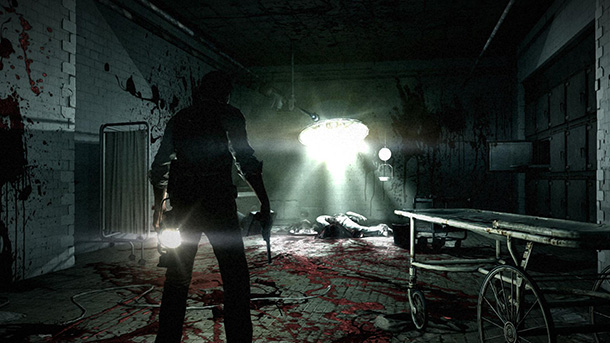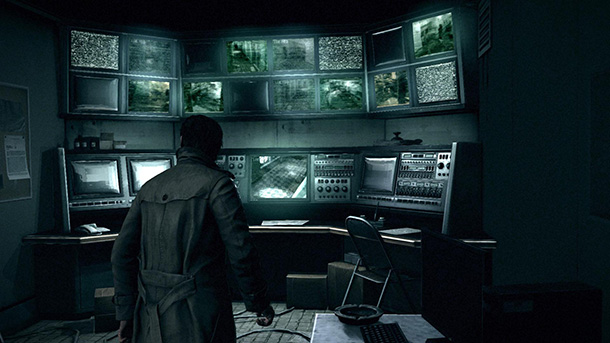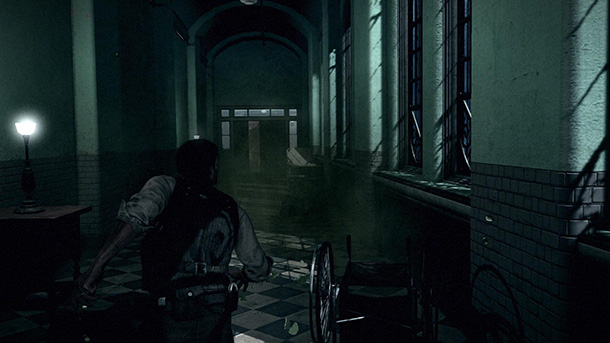
One of the trends of E3 this year was the return to survival horror. It seams like each year it’s tried (by the Dead Spaces and the Resident Evils of the industry) but few times does it nail the experience of shear terror that some of the horror games of the mid-90s achieved. Back then, Shinji Mikami was king. His Resident Evil was the de facto horror experience. Many a friend would tell me of late night replays of the game, just to frighten themselves before bed. But, as games become franchises and sequels water down the effect of the one-off fright night, the genre began to become more action-oriented.
Twenty or so years later, Mikami is back with a new game built around the same survival horror concept, but with a modern approach to terror. The Evil Within leaves the notions of video game survival horror behind in favor of those from more recent Hollywood cinema. Its inspiration isn’t from zombies jumping out of vents, but from sadistic murderers, the occult and gut-instinct survival.
If Resident Evil and Dead Space are 28 Days Later or The Walking Dead, The Evil Within seems to tilt towards SAW or The Ring.
Survival is at the center of the game’s experience. Though we’re sure there will be some shooting, the demo we were shown recently focused on just staying alive, avoiding a hulking brute hellbent on slaughter. There are four “S’s” that comprise the terror delivery in Evil Within: Sight, sound, stealth, and speed. It’s only via the sum of these aspects that the game seems to capture psychotic terror.

As the lead character, Detective Sebastian, passes from situation to situation, scene to scene, the visuals on the screen become representations of what he sees, even though the game is in third-person and not first person view. Visual tricks include hallucinations of environment changes from caves to industrial hallways, camera feeds that seem to come alive, and visions of giant arachnid-inspired witches that appear out of nowhere. It reminded me a little of some of the tricks that Eternal Darkness would play.
Sound and audio play a huge part in the game’s representation, tuned to the specific situations that are come upon. Tense areas are quiet, with only short breaths heard echoing through rooms. During one chase sequence, Sebastian’s heart pounded “badum-dum, badum-dum”, almost melodically and tauntingly. We knew something was coming when the heart sped up, even just slightly, and needed to prepare ourselves. The distant echo of chains, or limbs being chopped off of bodies, made us uneasy throughout.
Because this is Mikami’s true return to the survival horror genre, stealth would play an importance. Survival essentially equates to “don’t get caught” in Evil Within, with any number of specters or psychopaths chasing Sebastian. As the murderous brute pursued him in one scene, Sebastian snuck around behind cabinets and medical tables, sometimes just barely missing the sight of the monstrous man in the room. One false move and the psychopath would be on him. I especially liked one scene in which the detective is forced to hide in a locker, only able to peer through the slits in the door to see the murderer hunt around the room looking for him, knocking over tables and chairs in anger.

Finally, speed. Or, the lack of. Because so much of the game is drenched in survival, running is the best method to do so. Early on in the demo we witnessed, Sebastian’s leg had been hurt, and he could only hobble and limp at an excruciatingly slow speed as he was chased. Though, it’s perhaps worth noting that at some point in the demo he magically regained full strength after taking a chainsaw to the knee, but whatever. Video games. Running will, at least, seem like a viable option in some situations. That’s something that we’ll become accustomed to when our wits and bullets run out.
Beyond a short demo, we don’t know much about where The Evil Within‘s plot or gameplay will end up. The goal of our session was to show us how terrifying Mikami’s return to original IPs could be. While it didn’t quite leave us wetting our pants in fear, it did show us that the building blocks exist to revitalize a genre that has recently strayed from its horror roots.


No Comments